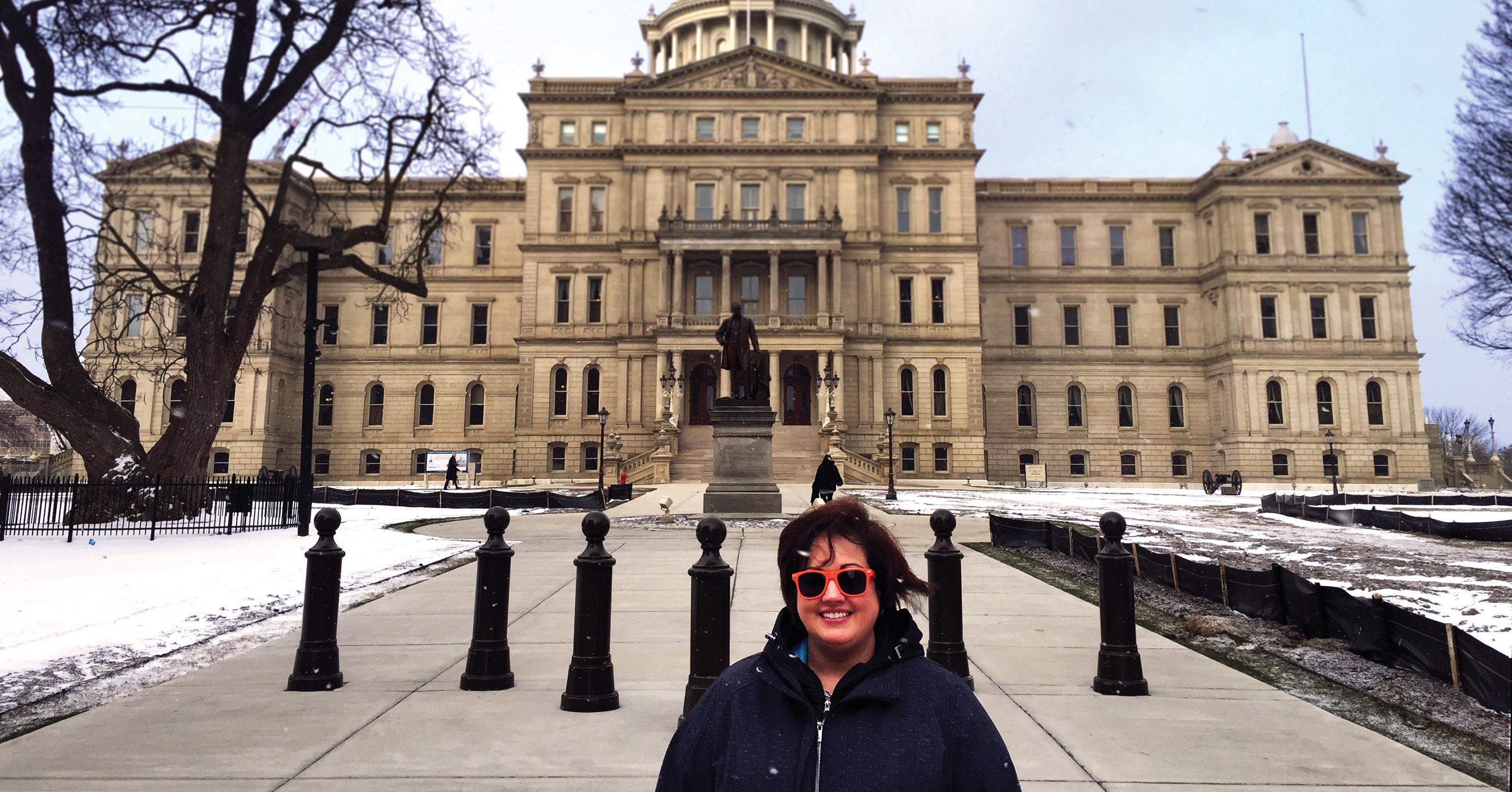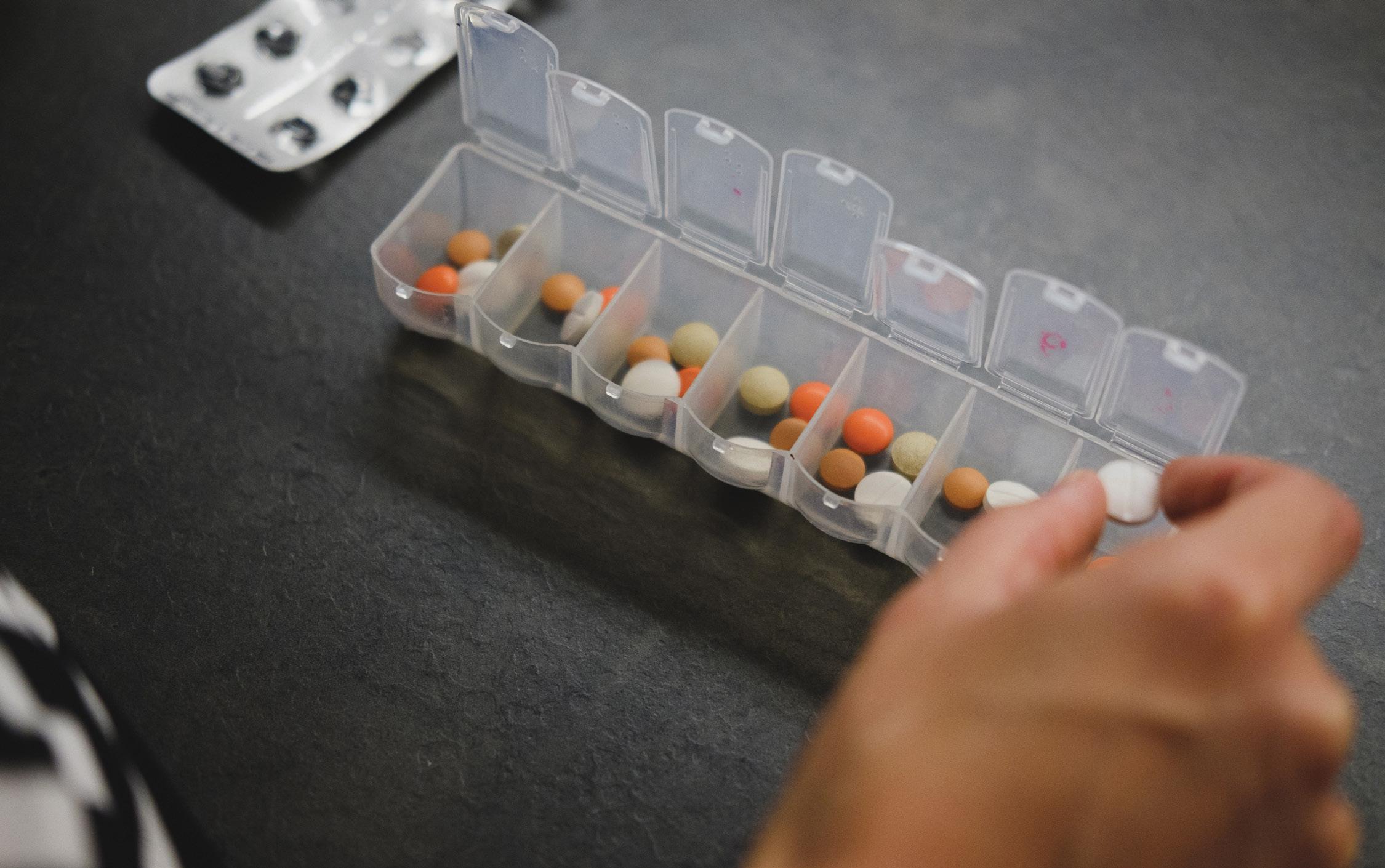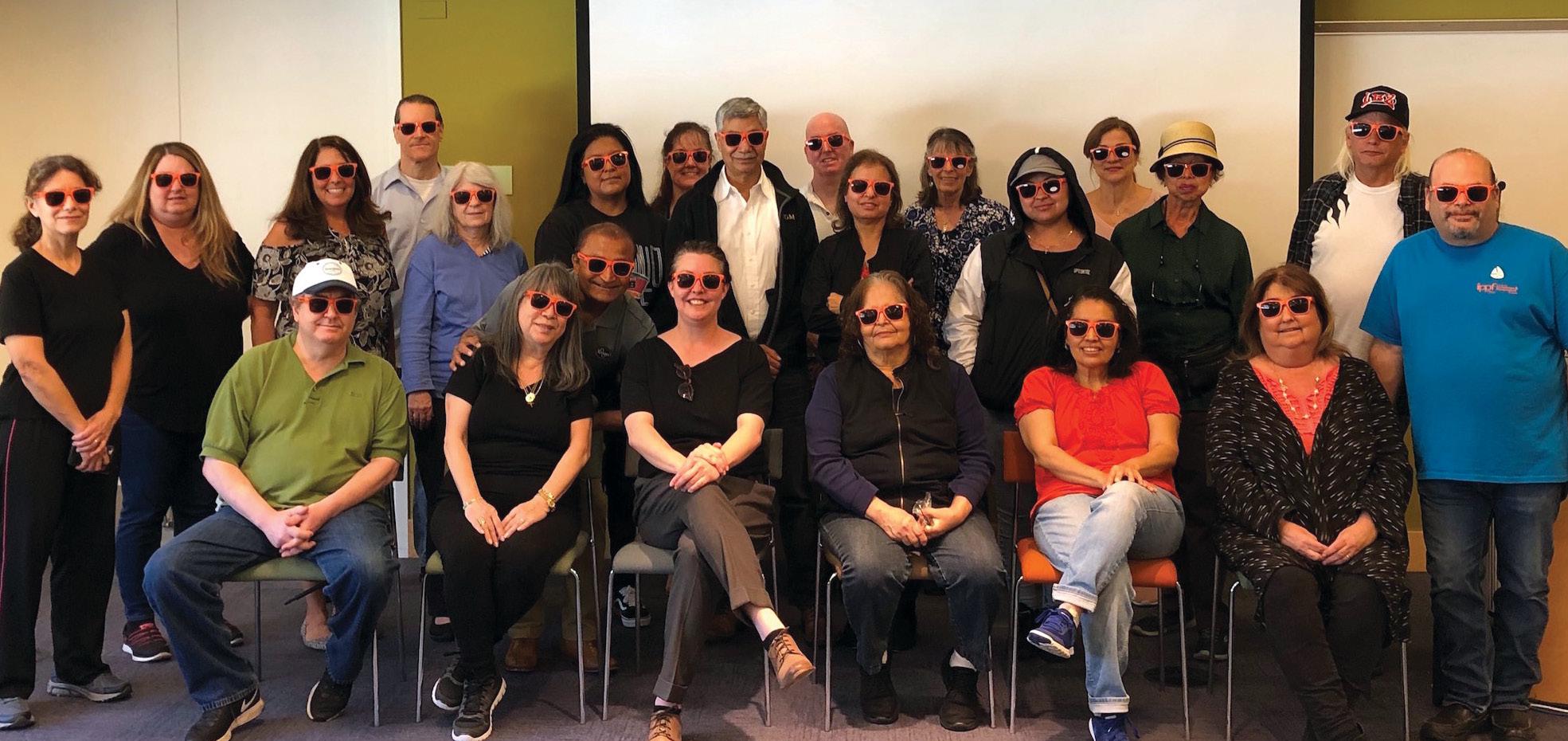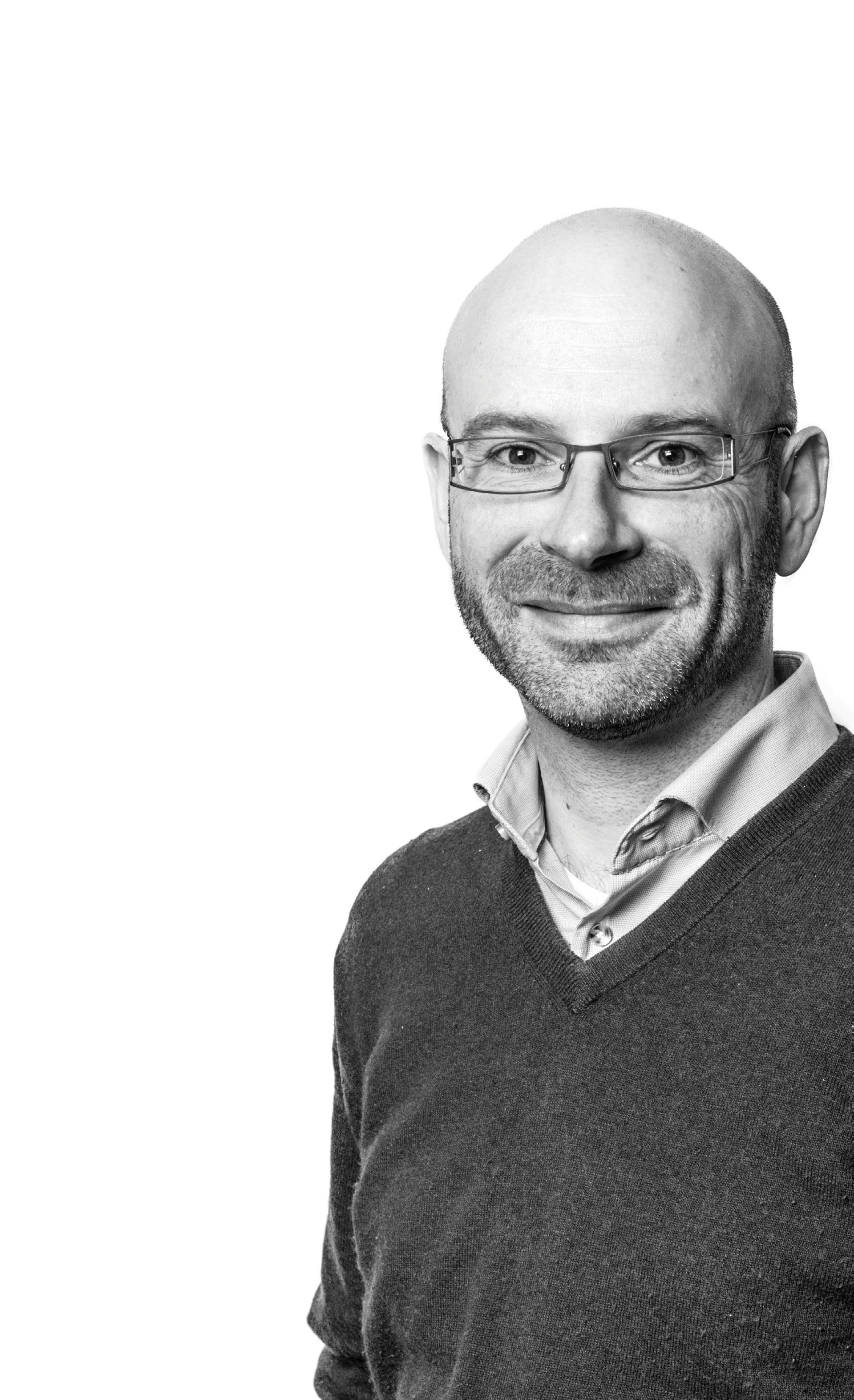
7 minute read
Rare Disease Week A REFLECTION AND LOOK FORWARD
Fred Wish
Last year, I was fortunate enough to take part in Rare Disease Week on Capitol Hill, a gathering of hundreds of patients, caregivers, researchers, and other people from all over the United States who share an interest in shaping healthcare policy. Participants spent an entire week learning about health- care and funding issues affecting the rare disease community, the legislative process, and how citizen advocates can present their stories in ways that are more likely to hold the attention of legislators and staff members.
Advertisement
One of the first things I learned at Rare Disease Week was that the term rare disease is a misnomer of sorts. By definition, any condition affecting fewer than 200,000 people in the United States is considered a rare disease. There are an estimated 7,000 rare diseases, and the total number of patients in the United States is estimated at 25 to 30 million. When you add the num- ber of caregivers, researchers, and practitioners who deal with these diseases, one out of every seven or eight Americans are a part of the rare disease community. Taken in that light, we’re hardly rare at all.
As a pemphigus vulgaris (PV) patient, I was aware of the work the IPPF had been doing to raise awareness and advocate for more research and treatment fund- ing. However, I was not aware that a whole group of similar organizations, along with university medical research departments, had teamed up with Rare Disease Legislative Advocates (RDLA, a program of the EveryLife Foundation for Rare Diseases), to encourage our senators and mem- bers of Congress to support efforts to address the challenges of rare diseases. Rare Disease Week on Capitol Hill is one of the pri- mary ways that RDLA draws the national legislature’s attention to those challenges.
Attending Rare Disease Week was an easy decision for me. I had the time and energy available to devote to something I support and the willingness to leave the comforts of my home for a good cause. I also had a curiosity about the process. I had done a little legislative outreach (okay, lobbying) for the Pharmaceutical Manufacturers Association in the late ’80s and early ’90s, but had never taken part in a large, concentrated effort such as RDLA’s. Could the participating organizations and individuals really expect to influence the thinking of the House and Senate on healthcare policy? Part of the answer became clearer when I attended the opening reception. Over 800 people from all over the country were there, each with a story about a struggle with rare disease. Anyone present that evening couldn’t help but sense the commitment and positivity of the crowd. Although I met several eager first-time participants, I was mostly impressed by the enthusiasm of people who were there for the fifth or sixth year. These veterans helped reassure me that the effort was more than just an awareness-raising exercise.
The following day consisted of the Legislative Conference, an all-day session starting at 7:00 a.m. It spelled out specific goals for participants’ rounds of congressional offices, outlined proven approaches to presenting our specific issues, and provided practical information such as the protocols and courtesies expected when meeting with our representatives.
Not surprisingly, we were told that meeting with an actual member of Congress was unlikely, and we should anticipate meeting with a staff member specifically tasked with addressing healthcare issues. We were not to consider it a slight or a sign of lack of interest. Staff members would be more conversant with our concerns, would be able to direct their bosses’ focus toward the issues presented, and would be our primary contacts over the next several months to follow up about progress.
The Legislative Conference also provided time for participants to meet with others from their state or legislative district (New Jersey 4th, in my case) to plan the next day’s encounters, select a group leader, and, if needed, determine a “batting order” of which participant would speak and when.
We also received contact information to help us stay aware of schedule changes and to report any difficulties with the appointments. For example, suppose we were to meet with Senator A at 2:00 p.m. Then, Member B was running late for our meeting at 1:00 p.m. and couldn’t meet with us until 1:35 p.m., and it was a 20-minute walk between their offices. If something like this happened, we would get a notice via a dedicated phone app, along with instructions on how to resolve the problem. Likewise, if there was an extended discussion with a staffer that would cut into our next meeting, we had a number to call to help reschedule.
Overall, I came away from the Legislative Conference with confidence that the team I was on was ready to meet with our assigned legislators or staff members, tell our individual stories concisely, and do an effective job of starting to build a relationship with them.
The next day was Lobby Day, which started with another early breakfast and keynote address. One of the most useful items of the entire conference came out of the Lobby Day breakfast: a map of Capitol Hill showing the various House and Senate office buildings and their lesser-used entrances (security lines vary greatly in length), as well as the rabbit warren of individual legislative offices. Capitol Police Officers are accustomed to out-of-towners getting lost and are extraordinarily helpful, but the map was an essential part of the toolkit supplied by RDLA.
The New Jersey contingent of 18 people, in one configuration or another, met with representatives of both our Senators while visiting the offices of the entire New Jersey congressional delegation. I met with staffers from Representatives Chris Smith’s (CD-4) and Josh Gottheimer’s (CD-5) offices, as well as a representative from Senator Cory Booker’s office.
My day on Capitol Hill, aside from reminding me that “I’m Just a Bill” from Schoolhouse Rock just scratched the surface, reinforced my contention that much of the work of government, with oversight by our elected officials, is carried out by a vibrant, talented group of staffers. The congressional staff members we met all shared a few traits. They were young, averaging in age somewhere in their mid-to-late twenties; they were genuinely interested in what we had to say; and they were all really smart.
These encounters also made it clear that the personalized approach is effective in bringing attention to the shared concerns of the rare disease community. It is one thing to say, “We need to maintain adequate funding for the FDA so that it can continue to streamline its approval of new pharmaceuticals.” It is quite another to say, “I am a patient with PV, a potentially life-threatening disease. Advances in treatment that could save my life and those of thousands of others will be delayed if FDA appropriations are cut. I am requesting the member’s support of the bill that would assure continued funding for this critical matter.”
Telling our own stories made a difference. In those meetings with several of us talking about our personal situations, I could see the staffer paying greater attention, I suspect, than if we had come in with just a recitation of facts.
The following day, I attended a briefing of the Rare Disease Congressional Caucus, a growing bipartisan group of Senators and Representatives who have committed to giving a voice to the needs of those affected by rare diseases. The session brought in experts and interested parties to highlight the current state of both policy and legislative matters of concern to the rare disease community.
The final day of Rare Disease Week included a tour of the National Institutes of Health in Bethesda, Maryland, a world-class medical research facility in its own right, and a major grantor of funds for other non-governmental research projects.
I could come up with plenty of excuses to make my first involvement in Rare Disease Week my last. Just for starters, late February is about the dreariest time of year in the DC area. A PV flare that began in June is still not under control. As a confirmed night owl, I’m accustomed to sleeping late instead of getting to 8:00 a.m. meetings (or worse, 7:00 a.m. breakfasts). I’ll miss a session of guitar playing with my jam group at Maloney’s Pub and possibly my monthly poker game. The traffic in DC is worse than ever.
Yet, when somebody from the IPPF asked me if I planned to participate in the 2020 Rare Disease Week on Capitol Hill, my immediate response was, “Of course I am.” I found last year’s sessions inspiring and invigorating, and I truly got more out of it than I ever thought I would.
So, in February I’m going to again uproot my comfortable life at the Jersey Shore and join the hundreds of patients, caregivers, and other advocates to push for legislative action that can improve the lives of millions. I’d encourage anyone with an interest to register for this year’s session.
Fred Wish is a PV patient who lives at the Jersey Shore. He retired from full-time work in 2010 and owns a writing and editorial service company with his wife, Loretta. He enjoys being a member of a classic rock band, plays a possibly competent game of poker, and looks forward to spoiling his grandson at every chance.









